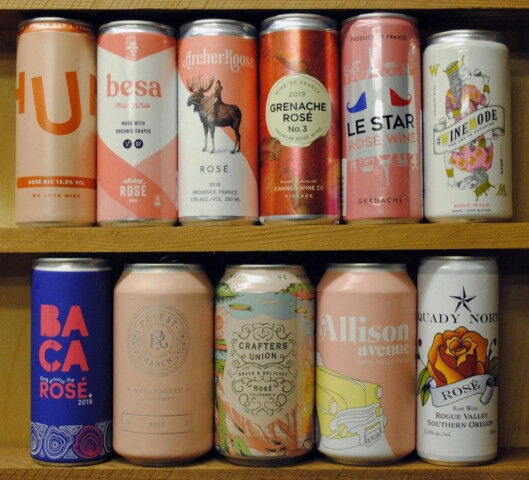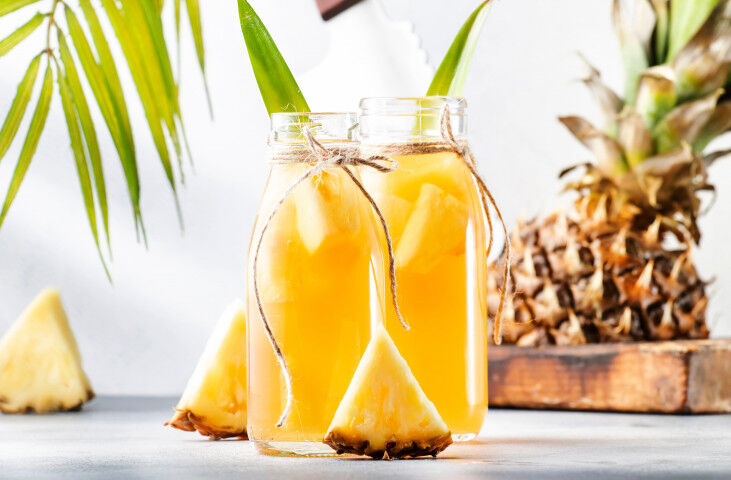10 Food & Wine trends we’re likely to see in 2022
As we close out 2021, we can reflect back on a year that, like 2020, has been marked by the distinct flavor of the pandemic. Because we stayed at home to cook, because we began paying more attention to our diets, because the media and political focus was often on restaurateurs, we’ve faced a full 24 months of food-themed lifestyles.
This focus on food in general has given us all a new level of confidence with the world of food and wine, as we become more familiar and at ease with a world of culinary products and preparations.
What can we expect from the ingredients, recipes, and nutritional trends in 2022?
While some trends are already claiming their places in 2022, many have yet to arrive and make themselves known. What we can say for certain is that the classics, as always, will be part of the upcoming year, as they provide us with that comfort and assurance that all is well in the world.
However, there will be new trends you haven’t even thought up yet, so let’s take a peek at some predictions for 2022.

1. Less alcohol doesn’t mean less enjoyment
The notion of alcohol-free or low-alcohol content beverages has been on the table for some time now. Indeed, the European Parliament has been already discussing for several weeks the implementation of stricter norms and limitations on the promotion and communication of alcohol-based entertainment. When you take a look at the world of alcohol from the mixologists’ perspective, the world of mocktails (or alcohol-free cocktail versions), very popular during happy hours of the Pandemic period, has won the latest round.
What was the secret weapon in favor of mocktails?
Botanicals, to be sure, as well as an array of natural ingredients that helped make these alcohol-free concoctions so flavorful and brimming with aromas. However, ramping up the classic cocktail battle, a noticeable decrease in consumers willing to suspend alcohol consumption on a more regular basis has been noted. So the concept of Dry January, a month-long hiatus period often recommended by nutritionists of suspension of alcohol following the holidays, might not one to fruition for 2022.
Why Millennials Drink Less Alcohol?
A recent study undertaken by the British company Wine Intelligence proved that 39% of consumers of popular wine brands are moderating their consumption. Interestingly enough, the study also proved that premium offers by these main brands will likely be successful with consumers, who donì’t feel penalized by these special offers even as profit margins for the main brands continue to decrease as consumption rates inch down.
What does this mean?
That the tenet of drinking less, but drinking better is a guiding philosophy rapidly gaining tract for all home consumption markets. Additionally, statistics also show a marked increase in the Millennial generation reaching out and discovering wines

2. Canned Wine Becomes Less Revolutionary
In order to fully comprehend the next trend, let’s keep our minds engaged with the world of Millennial consumers. The trend of Canned wine first gained traction in 2021, and 2022 predictions see this trend continuing to grow: canned wine showcases a wine container that’s lighter, creates less waste, and provides easy, informal consumption in a single-serving format.
Cans are particularly well-suited for wines with lower alcohol content, and indeed, many bubbly wine producers have already begun focusing on this packaging option. After all, it’s worth remembering that carbonated drinks are the world’s best-selling, most popular canned drink globally.
Canned wine: Passing fad or drinking revolution?
The United States has already welcomed the canned wine trend with open arms, and there are active predictions that 2022 will be the year Italy also takes the canned wine plunge.
3. Sunflower butter spreads some joy
The United States provides a starting area for many new food trends, including the use of Sunflower butter, sometimes used in place of the iconic peanut butter. Italian consumers have begun taking notice of sunflower butter’s positive properties, and have begun incorporating the butter into cakes where butter traditionally plays a primary role, in baking, for instance.
The ever-popular Christmas Panettone and Pandoro cakes, and other yeast-based holiday baked goods are now featuring this vegetable-based butter.
Is SunButter sunflower butter healthy?
With a taste quite similar to that of peanut-based butter, sunflower butter instead is free of any milk or dairy derivatives, making it the ideal selection for vegans, as well as consumers with lactose and gluten intolerances. Need an extra benefit? Sunflower butter is also rich in vitamins B and E.
For the home chefs out there, remember that Sunflower butter is best used in raw format, and is not recommended for stovetop cooking.
4. Vegetables Provide Variety
The world of vegetables is immensely varied, with endless opportunities to enrich our diets. Vegetables can simulate all different kinds of ingredients, including meat and fish options, èproviding us with foods that resemble animal proteins, but are in reality vegetable-based solutions.
With the help of different sources, be they environmentally-focused, animal-rights focused or just health-focused resources, the number of plant-based food resources are increasing day by day.
Challenges faced by producers of plant-based foods now are to continue improving on their products, making them healthier, as well as tastier and more in line with the foods they’ìre meant to replace.
Why is vegetable variety important?
A new food movement has taken hold, the world of Flexitarians (not to be confused with vegetarianism or veganism). Following this diet pattern, Flexitarians use the Mediterranean Diet as a starting point and essential inspiration. The UNESCO World Heritage Intangible Cultural Heritage-recognized Mediterranean Diet includes a greater consumption of proteins like legumes and nuts as opposed to red meats like steaks and sausages.
As a general movement, the Flexitarian regime is one of reduction and not elimination, provided that dietary choices follow specific quality and sustainability levels.

5. All Hail the Yuzu Fruit
During this culinary moment where acidity and bitterness are the flavors ruling the scene, the Yuzu fruit, cultivated and grown in Japan, China, and Korea, is a perfect match.
The Yuzu fruit is believed to be the result of cross-breeding of mandarin and pepeda (a regional lemon variety) fruits. The apple seems to be native to Asia, and ripens in the colder winter months. The Yuzu’s skin color is typically an irregular yellow shade tending towards green.
Is yuzu a real fruit?
- Like many other citrus fruits, the Yuzu is a powerful antioxidant rich in Vitamin C and polyphenols.
- Flavorwise, one is reminded of grapefruit, and although it does have a sour note to it, the Yuzu fruit is often incorporated into sweet dishes. Yuzu is the perfect companion to sushi, sashimi, and ramen, and is also marvelous when grated on top of some fish dishes.
- Its function isn’t limited to the kitchen, however, as the Yuzu is also delightful in tea and cocktails.
- In the East, the Yuzu has also been the favorite juice of Japanese warriors who incorporated Yuzu juice into their diets to recover energy, and boost their immune systems.
- The Yuzu’s drawback is that it’s not the easiest fruit to find, and thanks to a difficult production process, the cost of Yuzus reflects its premium status.

6. Sweden Presents Potato Milk
Plant-based milk and dairy options are increasingly popular, thanks to ever-more animal-milk intolerances, as well as increased demand from the vegan and vegetarian markets.
The newest entry into non-animal based dairy comes from Sweden’s Eva Tornberg, a professor and researcher at the acclaimed University of Lund. In 2017, Tornberg discovered a process where ordinary potatoes could be transformed into a vegetable drink akin to classic cow’s milk. The “milk” is obtained by combining the tubers with canola oil.
What does potato milk taste like?
The resulting product is known as Dug, and also contains pea protein, maltodextrin, chicory fiber and natural flavors in order to make it as close to traditional milk as possible. The drink also is a great source of vitamins D, B12 and folic acid.
Of course, the benefits of potato milk are not just limited to flavor or nutrition. The environmental impact of potato milk is even lower than that or other vegetable-based milk alternatives. Compared to popular Oat milk, potatoes occupy half the amount of soil space, and compared to Almond milk, potatoes require up to 56 times less water for cultivation.
Potato milk is also much better environmentally speaking than the other popular milk varieties, Rice and Soy milks.

7. Food-friendly Flowers - Hibiscus at the Head of the Pack
Contrary to your first reaction, we’re not talking about the umpteenth edible flower used to grace lovely plates of food. No, we’re talking instead about the powders obtained from the Hibiscus flower, specifically, its most famous by-product, Karkadé.
Karkadé is used extensively in herbal teas and infusions, and is beginning to also find a home in diverse products like yogurt, jams and various types of artisanal beverages.
Why Is Hibiscus So Special?
The Karkadé powder is a true powerhouse of natural benefits: fat-free, cholesterol-free, caffeine-free, and chock-full of antioxidants. While the hibiscus is a native flower in Africa, there are over 300 different varieties known throughout the world.
Why do we love it in culinary instances? Karkadé contains a delicate acidity that lends a fresh note to foods, be they savory or sweet. Karkadé is remarkably easy to find in its dried version in herbalist shops. The powder is strongly recommended in beverages and herbal teas, with its proven ability to lower blood pressure, cholesterol levels, and triglycerides.
8. A Cup of Tea for You?
One of the advantages of smart working has allowed people to indulge in a break that up to now was generally met with the classic coffee break. Smart-working has changed our daily habits, allowing us to improve job performance from the comfort and familial ambiance of our own homes.
One result from smart-working has been the Tea Break, the result of a less-hurried schedule, and the ability to dedicate more time to our dietary needs. Infusions, herbal teas, and chai are often accompanied by homemade cookies and cakes rich in vitamins and antioxidants, particularly when paired with a wholesome “cuppa” tea.

9. Want more Fermentation? Try Tepache
The popularity and success of fermented beverages has proven to be unstoppable. Homemade fermented drinks are budget-friendly options that are homemade, good for you, alcohol-free, and refreshing.
What’s not to love?
You might already be familiar with Kombucha, perhaps the most well-known fermented drink. Kombucha is, in layman's terms, a slightly sparkling fermented tea created from the combination of sweetened black tea and scoby, a liquid symbiotic collection of naturally-occuring bacteria and yeast.
Kombucha isn’t just a pretty face though. This fermented drink is also a wonderful energy resource, and is brimming with probiotics, vitamins B, C, antioxidants, amino acids and digestive enzymes. If you’re in the mood for something new however, let’s move away from the East and head south.
How alcoholic is tepache?
Mexico is home to the tasty Tepache beverage. This option is slightly alcoholic, and produced from the fermentation of pineapple skins when combined with piloncillo, a type of sugar similar to Molasses. Other varieties include the use of cane sugar for the fermentation, and it’s not unusual to include cinnamon and other local spices into the blend.
Super-fresh Tapache (also known as pineapple beer) can be found for sale in every corner of southern Mexico. Some areas, like the state of Oaxaca, are specialized in the production of tapache, thanks to the much-alive pre-Columbian Aztec traditions that still hold a place of importance in the hearts of local residents.
While the healthful benefits of tepache are still being studied, the drink is just as refreshing and exotic in flavor as its cousin Kombucha. Mixologists are particularly enamored by tepache’s summer-fruit sensations and aromas.

10. Restaurant Trends for 2022
The restaurant industry has experienced, like so many others, the need for flexibility and adaptability as they navigate the pandemic-era months. Some restaurants have implemented changes in their rules and habits in 2021, elements that will likely stay in place and be reinforced into the upcoming year.
First and foremost, we note a reduction in the time restaurants are open and operating, particularly those in the fine dining sector. An ever-increasing number of restaurants have opted to remain closed two-to-three days per week, focusing more on lunch or dinner services based on client demand. This approach has helped thus far lower operating expenses, but also responds to the global shortage of hospitality workers, including kitchen and dining room staff members.
After the pandemic, how is the food business likely to fare?
2022 will also likely see an overall increase in menu prices. This increase is almost wholly due to the rising costs of raw materials. Restaurants therefore are likely to begin simplifying menu options, with fewer menu selections, and dishes that are easier to understand and enjoy. The ultimate goal of the restaurant’s staff is to minimize waste, and to lighten the company’s overall food costs.
As 2021 draws to a close, one other issue that has deeply and negatively affected the restaurant industry is the omnipresent supply chain drama: reduced land transportation options, rising fuel costs, port jams and delays with full containers waiting to be unloaded and delivered, are all features that have often left restaurants larders with bare shelves.
Therefore, restaurants and consumers alike will surely express increased interest in local, seasonal products, and ingredients that are subsequently easy to source. Supporting local producers will not just become a fashionable choice whimsically dictated by the culinary elite. The support system will actually be developed instead out of necessity thanks to the supply chain disruption as it continues to unfold.
Ultimately, a stronger sense of collaboration amongst chefs may emerge. Renowned chefs and those with fewer public recognition may combine their efforts to create unique tasting menus filled with strength and creativity. The kitchen workplace is undoubtedly a source of tremendous stress for today’s celebrity chef.
All the trends therefore beg the question: isn’t it time now to get back in the kitchen and start having some fun?
What could possibly be better than sharing ideas and creative passions?

all.sign in to leave a review








